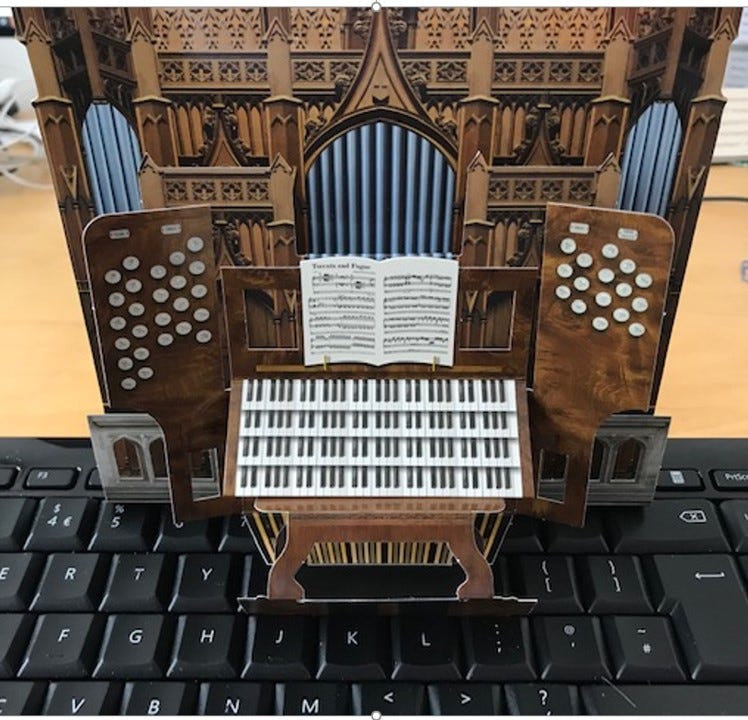From time-to-time visiting organists arrive at my church to play for weddings, funerals and sometimes as a stand-in for a Sunday service. Rolling back the cover they are confronted with a 54 rank two manual Allen organ with a floating solo division, apparently three expression pedals and an array of couplers and the solo ranks that extends almost the full width of the keyboards. One of the expression pedals is a crescendo pedal with two different settings. There is also a transposition knob which can be helpful, but the warning light that it is in operation is hidden away out of sight!
To further complicate things the speakers are arranged in such a way that the organist, sitting very high up in a west end gallery, has no idea of the difference in volume between what they are hearing and what the congregation is experiencing. With all three divisions ‘enclosed’ setting the overall balance using the illuminated bar display is a crucial element of the set-up.
Some years ago, I wrote a Visitor Guide to the organ and set up the ten General pistons in a very gradual crescendo so that a visiting organist could survive quite well with just using them to play for a service. Piston 5 gives a good mid-point to start for playing a hymn. Because of the loudspeaker problem I set these up with an experienced organist on the organ while I wandered around the church. This in itself was a useful exercise. (See my post Am I too loud?). I don’t worry about visiting organists setting their own combination of divisional registration (though I have no idea why they should want to do so!) but the Generals are locked down as a safety net.
There is also a warning that the manuals are 61 notes and the pedal keyboard is 32 notes, which can be dangerous when playing the Widor toccata and needing to hunt down the top pedal F. It also shifts the centrepoint of all the manuals. It may only be an two or three centimetres but that can be quite enough to cause a visitor’s pedal technique to fall to bits!
As a peripatetic organist I frequently have to play an organ that is new to me. Invariably there is never a basic ‘Visitor Guide’ to help me make important decisions on how to get the best out of the instrument, and ideally provide the same musical experience as the resident organist. For me the most challenging issue is working out what the optimum balance for the organ against the congregation, especially where the orientation of the organ gives a false indication to the player of the volume of sound in the church.
This is not just a problem in parish churches. I’ve played for services in a number of cathedrals and in these situations the congregation has no indication that there is a stranger playing the organ - until they play over the first hymn! It is either way too loud or way too quiet. In cathedrals in particular the combination settings can be (shall we say) unpredictable. In one cathedral all seemed to progress well on the Swell settings until I discovered that piston 8 cut back everything to a solo oboe!
I remarked in a recent post that an organ is a machine. Machines always come with a User Manual. Why not organs? . In theory a prior visit to the organ can be helpful but that only sorts out some of the ‘mechanical’ issues and not the balance of the organ in a service setting.
Have you ever considered writing a Visitor Guide for your organ? It can be a useful exercise if only because you need to work out, with a colleague, the ideal registrations for a small and a large congregation. It will only take a short time to prepare but should never need to be revised. An A5 sheet with 200 words should be more than adequate. I’m getting to the stage where I might have a variable fee, with an additional charge for having to play the organ without this essential guidance.


